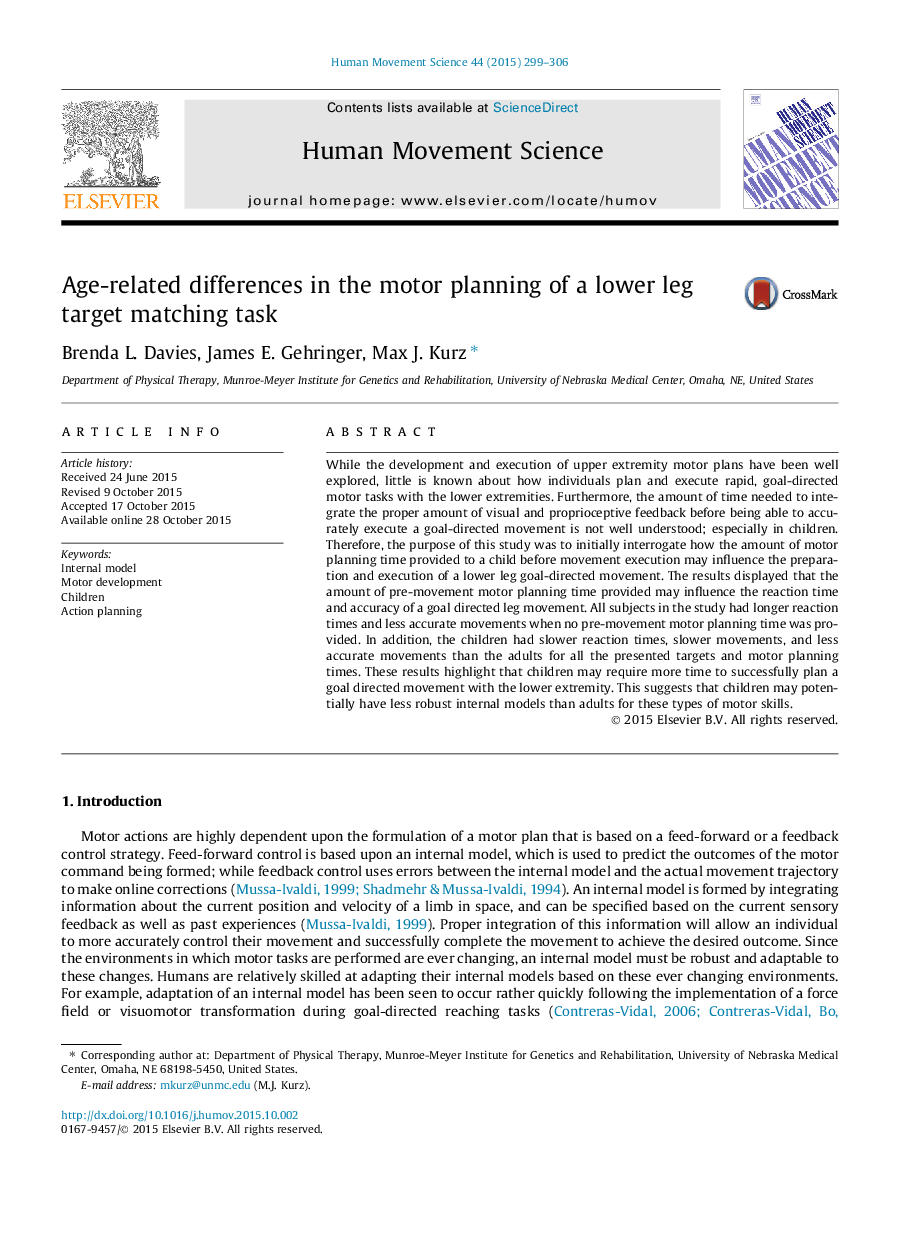| Article ID | Journal | Published Year | Pages | File Type |
|---|---|---|---|---|
| 7291917 | Human Movement Science | 2015 | 8 Pages |
Abstract
While the development and execution of upper extremity motor plans have been well explored, little is known about how individuals plan and execute rapid, goal-directed motor tasks with the lower extremities. Furthermore, the amount of time needed to integrate the proper amount of visual and proprioceptive feedback before being able to accurately execute a goal-directed movement is not well understood; especially in children. Therefore, the purpose of this study was to initially interrogate how the amount of motor planning time provided to a child before movement execution may influence the preparation and execution of a lower leg goal-directed movement. The results displayed that the amount of pre-movement motor planning time provided may influence the reaction time and accuracy of a goal directed leg movement. All subjects in the study had longer reaction times and less accurate movements when no pre-movement motor planning time was provided. In addition, the children had slower reaction times, slower movements, and less accurate movements than the adults for all the presented targets and motor planning times. These results highlight that children may require more time to successfully plan a goal directed movement with the lower extremity. This suggests that children may potentially have less robust internal models than adults for these types of motor skills.
Related Topics
Life Sciences
Neuroscience
Cognitive Neuroscience
Authors
Brenda L. Davies, James E. Gehringer, Max J. Kurz,
